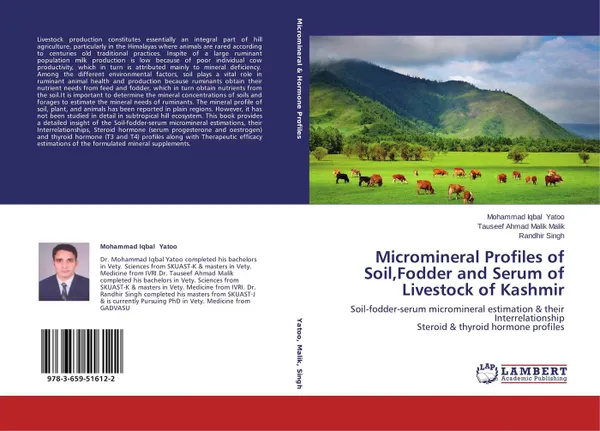Micromineral Profiles of Soil,Fodder and Serum of Livestock of Kashmir
2014
Переплёт: Мягкая обложка, 164 страницы
Категория: Научная литература
Тираж: 500
Где найти книгу?
📘 Livestock production constitutes essentially an integral part of hill agriculture, particularly in the Himalayas where animals are rared according to centuries old traditional practices. Inspite of a large ruminant population milk production is low because of poor individual cow productivity, which in turn is attributed mainly to mineral deficiency. Among the different environmental factors, soil plays a vital role in ruminant animal health and production because ruminants obtain their nutrient needs from feed and fodder, which in turn obtain nutrients from the soil.It is important to determine the mineral concentrations of soils and forages to estimate the mineral needs of ruminants. The mineral profile of soil, plant, and animals has been reported in plain regions. However, it has not been studied in detail in subtropical hill ecosystem. This book provides a detailed insight of the Soil-fodder-serum micromineral estimations, their Interrelationships, Steroid hormone (serum progesterone and oestrogen) and thyroid hormone (T3 and T4) profiles along with Therapeutic efficacy estimations of the formulated mineral supplements.
Мнения
